11 June 2023
Understanding Franchising:
Putting people into the field to deliver products or services, and/or setting-up bricks and mortar distribution outlets is expensive. And managing people at a distance can be problematic. Working with distributors also has its challenges. However, there is an alternative distribution strategy - FRANCHISING.
Franchising hands the responsibility for sales people, service people, business premises, and managing staff to other business owners with 'skin-in-the-game'.
Franchising as a distribution strategy:
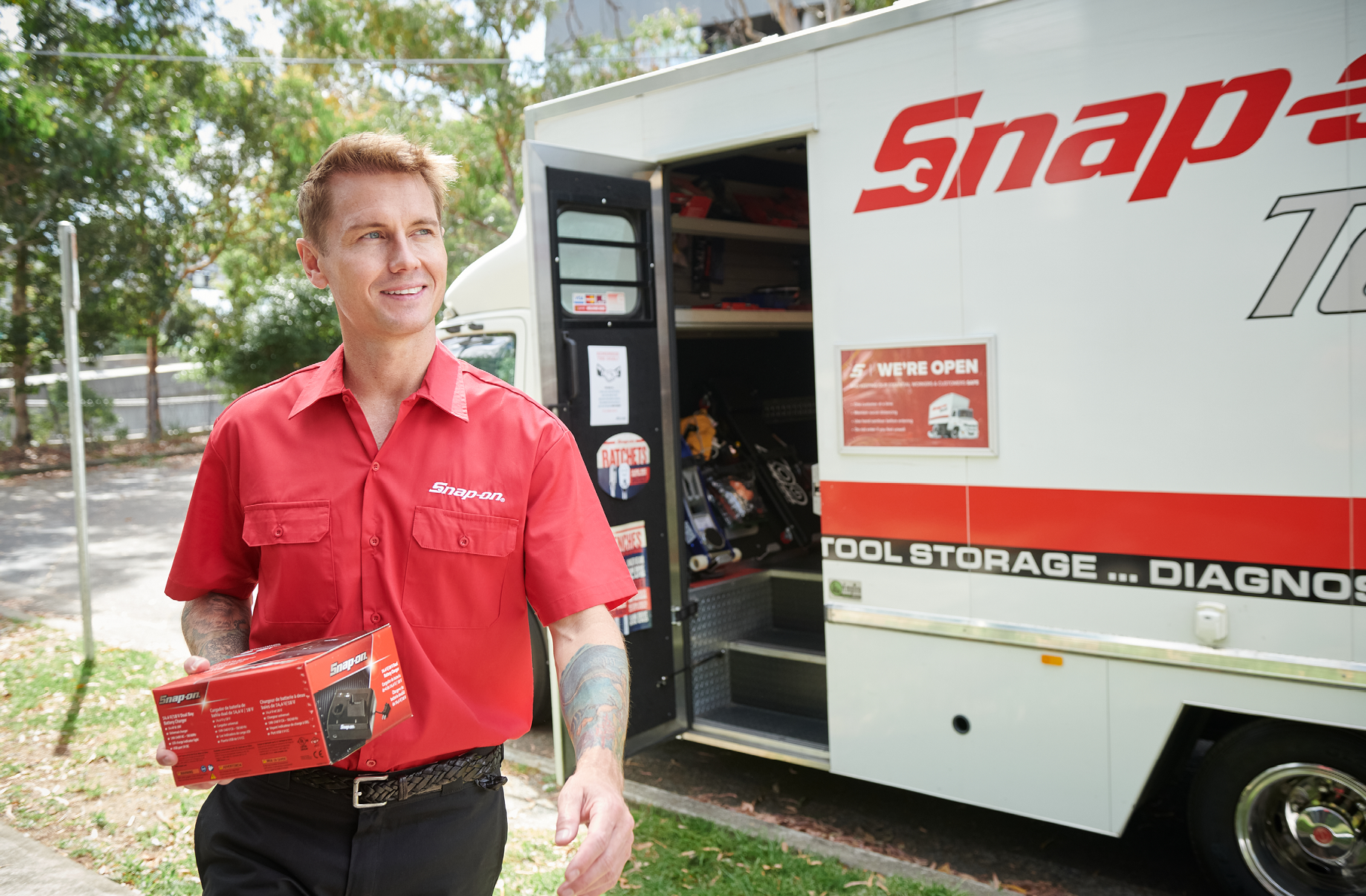
Franchising is an alternative method for distributing products and services.
While still classified as indirect distribution, franchising as a distribution method relies on a stronger contractual and day-to-day business relationship with the distributor (franchisee) than other distribution relationships.
In the above picture (Snapon Tools) we can see the person is branded Snapon Tools, the vehicle is similarly branded, BUT this guy owns and operates:
- his business,
- the vehicle,
- and the stock in the vehicle.
He buys the tools from Snapon (the manufacturer) and re-sells the tools to HIS customers in his patch.
He looks like an employee of Snapon Tools, but in reality he is self employed.
Snap-on-Tools is a great example of using distribution franchising as an alternative to traditional retail distribution.
Snap-on Tools, established in 1920, has built a robust reputation as a leading manufacturer of high-quality, professional-grade tools and equipment. Unlike many traditional manufacturers that rely on retail distribution channels, Snap-on has successfully bypassed these by adopting a unique franchised distribution model.

Their method is to sell products directly to end-users through a network of franchisees who operate mobile stores, often referred to as "tool trucks." These franchisees visit customers at their workplaces, such as automotive repair shops, providing a convenient and personalized shopping experience.
This sales model not only ensures customers have immediate access to Snap-on's extensive product range but also fosters strong, long-term relationships with professional users
By leveraging this model, Snap-on has been able to maintain a high level of control over its brand and customer experience with total independence from retail chains that have a strangle-hold on the consumer market.
Franchisees are trained extensively to provide expert advice and support, which enhances customer satisfaction and loyalty. Additionally, this model allows Snap-on to respond quickly to market demands and customer feedback, driving continuous innovation and improvement in their product offerings. The direct interaction between franchisees and customers also helps Snap-on gather valuable insights into industry trends and needs, further solidifying its position as a leader in the tools industry.
Distribution strategy plays a pivotal role in determining the success of a product or service. Effective distribution ensures that goods or services reach the target market efficiently and profitably.
Franchising has gained popularity over the years due to its ability to combine:
- Entrepreneurship: each franchisee is a business owner responsible for developing their own customers. The business owner has invested their own money in the business and is completly dependent on the profits they generate to make a living.
- Brand expansion: each franchisee operates not under their own brand but the common brand provided by the franchisor. Done properly, customers cannot tell the difference between company owned distribution outlets and independently owned franchise businesses.
- Localized market knowledge: the franchisee restricts their servicing of, and search for customers to a defined territory.
How franchising works - creating symbiotic relationships
Franchising is a business model that involves the granting of rights by a franchisor to franchisees, allowing them to operate a business under an established brand and proven business system. This relationship is based on a contractual agreement where the franchisor provides support, training, and access to proprietary knowledge, while the franchisee invests in the business and adheres to the prescribed guidelines and standards.
In essence, franchising is the selling of a proven business model and assigning the rights to operate under an established brand.
However, Franchising can be used to distribute products and services (called a "distribution franchise"), and this is where the lines can blur between the concept of distributor, authorized reseller, and dealer. The key differences are not in the names but in the type of agreement between the manufacturer/importer and the reseller.
In Australia, franchising has specific legal connotations.
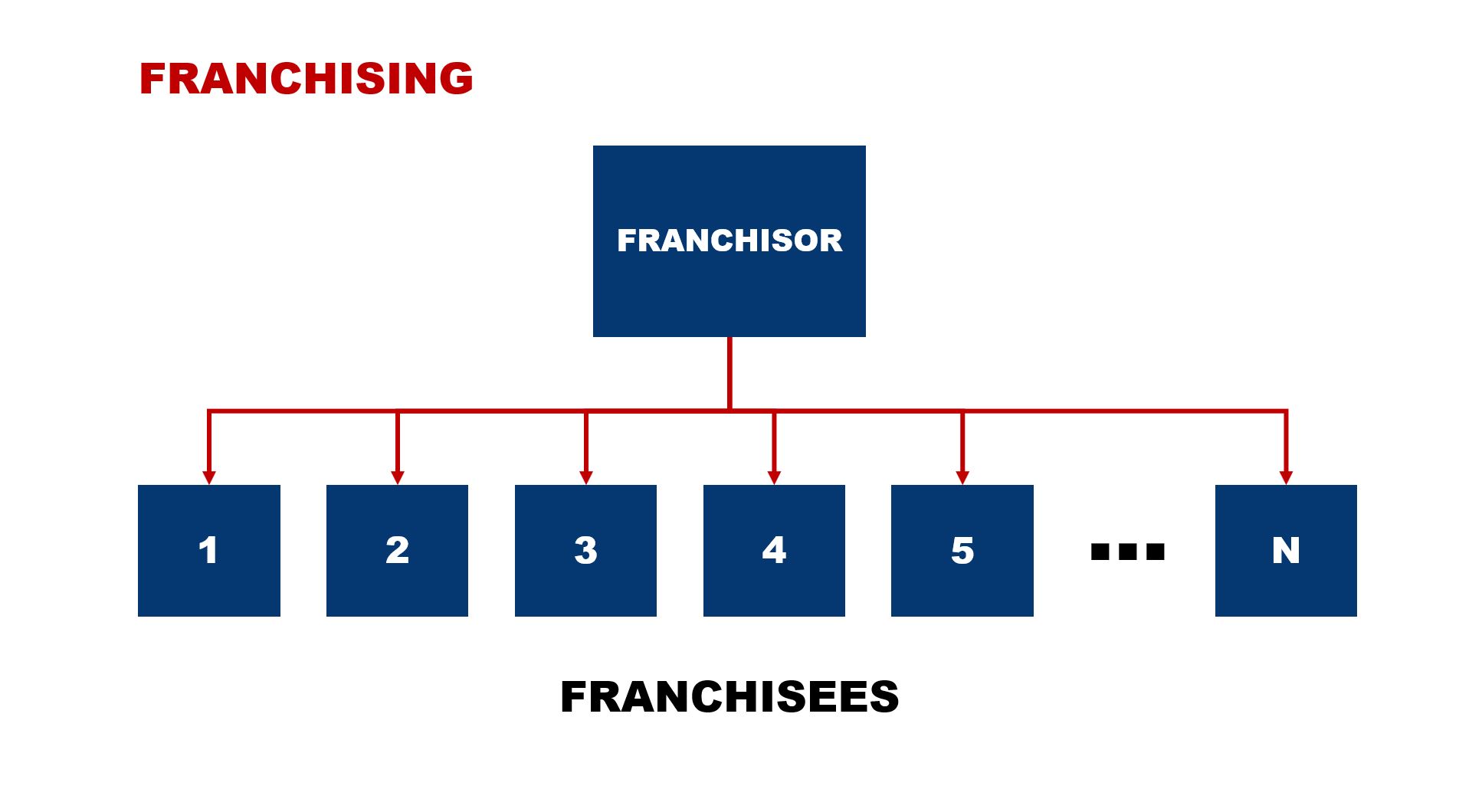
In Australia, the primary legislation governing franchising is the Franchising Code of Conduct, which is regulated by the Australian Competition and Consumer Commission (ACCC).
However, Franchising comes under a number of other laws affecting franchising including both Federal and individual State legislation. It's always recommended to seek legal advice for specific situations due to the complexities and potential grey areas in the law.
Broad definitions used in this article to explain franchising
Franchising: a business model where a number of independently owned businesses ("Franchisees") operate under the brand of a principal business "The Franchisor."
Franchisor: is the owner of the brand and business system being offered. Franchisors invest in the development of a strong brand and an efficient and codified business system that is highly attractive for people who wish to invest in owning a business where the business model has been tested and the speed to profitable operation is potentially shortened.
Franchisee: is the owner of the actual business that operates in adherence to the franchisor's brand standards and business system. Implicit in the definition of franchising is there are normally multiple franchisees. For example there are 1,035 McDonald's restaurants in Australia as of June 06, 2023. 85% are franchised.
The typical features of a franchise business model
From the consumers' perspective, done properly, the franchise appears to be one single well run business having many outlets or service people.
However, the reality is that franchises are multiple businesses with multiple business owners operating under a single brand but conforming to a tightly managed operational formula. Franchise business have the following characteristics...
Features common to all franchise models
- Business independence: The franchisor and franchisees all operate independent legal entities.
- Contractual arrangements: There is an agreement between the franchisor and each franchisee setting out the roles, responsibilities, and obligations of each party.
- Branding: the franchisor has developed not just visual standards (logos, logotypes, visual schemes and business premises designs) but has invested in establishing brand awareness amongst consumers which drives demand. This is most likely achieved through investing in advertising and is a primary function performed by the franchisor.
- Payments: Franchisees pay the franchisor both an initial sign-on fee and ongoing payments to remain part of the franchise network. These payments provide both an income for the franchisor but are also used by the franchisor to fund (depending on the business model) group marketing, supply of goods or services to franchisees, IT systems, ongoing innovation, and management of the franchise operation.
- Symbiotic relationship: The strength of the franchise business model is based on the franchisor and the franchisees being co-dependent. While it is each franchisee that transacts the sales and collects the revenue that feeds both themselves and the franchisor, the franchisor delivers considerable value through having developed a successful business model and providing the existence of the entire franchise network which enhances the value of the brand. As listed above, the franchisor provides other valuable services.
Features present in some franchise models
- Business model: The franchisor provides a proven business model in the form of a detailed explanation for how to operate the business including existing businesses that show the business model in action, procedure manuals, training and materials, and sometimes proprietary equipment needed to deliver, make, or sell the products or services.
- Training and support: depending on the sophistication of the franchise operation, the franchisor has a vested interest in the business success of each franchisee. To help franchisees succeed, typically the franchisor provides advice, business mentoring, and training to franchisees and their staff. McDonald's for example even has a central training facility called their "hamburger university" which it requires new franchisees to attend as part of their franchise agreement.
- Core business software: most franchise business models include access to proprietary software that has been custom built to support the franchise business model. This provides franchisees with added business efficiency and the franchisor with efficient reporting and tracking. The core business software is often integrated with cash registers providing the franchisor with real time reporting. For some retail chains it is often possible to see sales spike shortly after advertising campaigns have gone to air.
- Products or raw materials: typically, in the case of franchises that sell a branded product the franchisor sells to the franchisee these products. In the case of food franchises the franchisor will supply some or all of the raw materials, and in the case of a service franchise the franchisor will provide either high level assistance to deliver the service and or the methodologies.
- Buying power: The franchisor negotiates supply contracts on behalf of the franchisees leveraging the combined purchasing volume of all outlets to achieve a lower cost of sales.
- Demand generation and sales leads: Some franchisors run central marketing campaigns to generate brand awareness and/or feed sales leads to franchisees.
It is important to note that not all franchise businesses have ALL of the above features (other than business independence and contractual agreements).
Different types of franchises

Franchise models can be grouped into five broad categories:
Job or self employment Franchise

Typically requiring the least up-front investment and aimed at people exiting full-time employment to seek independence, the job or self employment franchise typically enables the franchisor to build-out a field force of service providers without directly employing people. Because each operator (lawn mowing person, for example) purchases and maintains their own equipment (vehicle, trailer, and garden maintenance equipment) and operates under their own business structure and business number, they are not deemed an employee under the Australian Tax Office definition.
The franchisor's role is to provide a well publicized brand, lead generation, central business systems (typically quoting,invoicing, and accounting software) and guidance as to how to set-up and operate their business. The franchisor's aim is to ensure maximizing business success for its franchisees but at the same time protecting the integrity of its brand.
Investment franchises
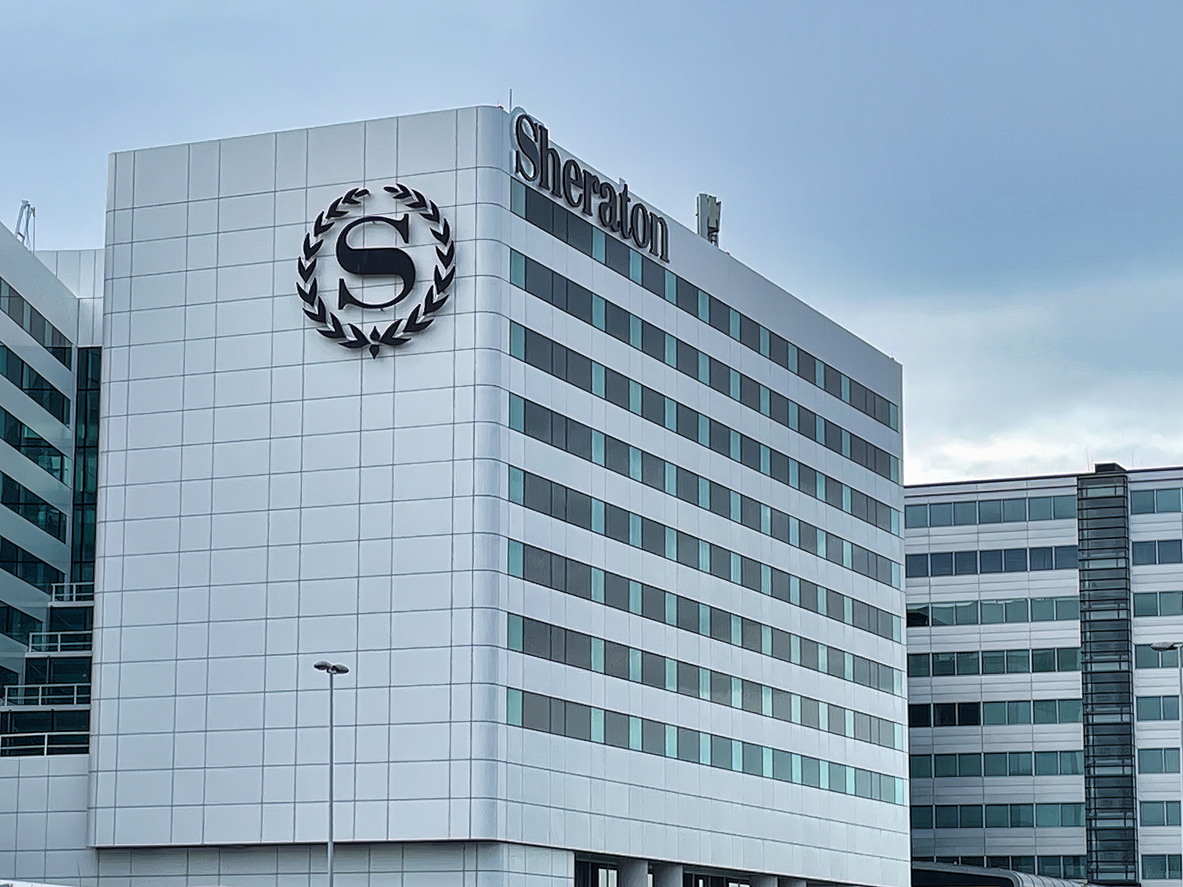
In the history of hotel chains. there are a number of business models whereby hotel chains leverage their brand and market clout.
Originally, hotel chains were BOTH property owners and hotel operators (fully integrated).
However, the quest for increasing distribution (more hotels in more markets) required huge capital. To increase the pace of market expansion, hotel chains partnered with property developers. The developers built the hotel and the hotel chain either leased the hotel or entered into a management contract to manage the property under their hotel brand (Hilton, Hyatt, Novotel, Marriott, Travelodge etc.)
However, large property development groups are increasing their expertise in hotel management and are entering into franchise agreements with hotel chains.

For the investment group this maximizes their return-on-investment through not only receiving the property lease income but also the profits from running the hotel operation.
Clearly, large investment sums are required to play in this space, hence the term "investment franchise."
However, more properly, the investment franchise model is about ensuring the financial success of the property development project by providing BOTH a purpose built property AND a financially viable tenant. This is in stark contrast to the property developer who simply builds a property and leases it out to tenants trusting in their ability to remain viable.
The investment franchise business model provides more control over the investment outcome. The distinguishing feature of the "investment franchise" model is that entering into a franchise is a control mechanism. The aim is not to become a hotel operator as the end objective, it's about maximizing return on investment while controlling risk.
From the hotel chain's perspective, the progression depicted in the above schematic illustrates the decreasing investment needed to rapidly increase distribution (more hotels in more locations) while controlling potentially the most valuable asset - the hotel brand. Return on investment as a percentage can be both increased and the financial risk of building and managing multiple properties in a diverse range of markets is passed on to the investor/developer.
Further, the franchise approach puts the onus on the developer to maintain the property and services standards that fit with the brand image. A big problem with hotel properties is they become "tired" in both decor (styles change), plant and equipment wears out, and the rooms become increasingly shabby accumulating years of quickly implemented repairs and maintenance.
However, some of these property investment groups are becoming large and financially successful managing franchisee properties for multiple hotel brands. You'd just want to be careful that the investment group doesn't wake-up one morning and say "hey, why don't we launch our own hotel brand?"
Distribution franchise
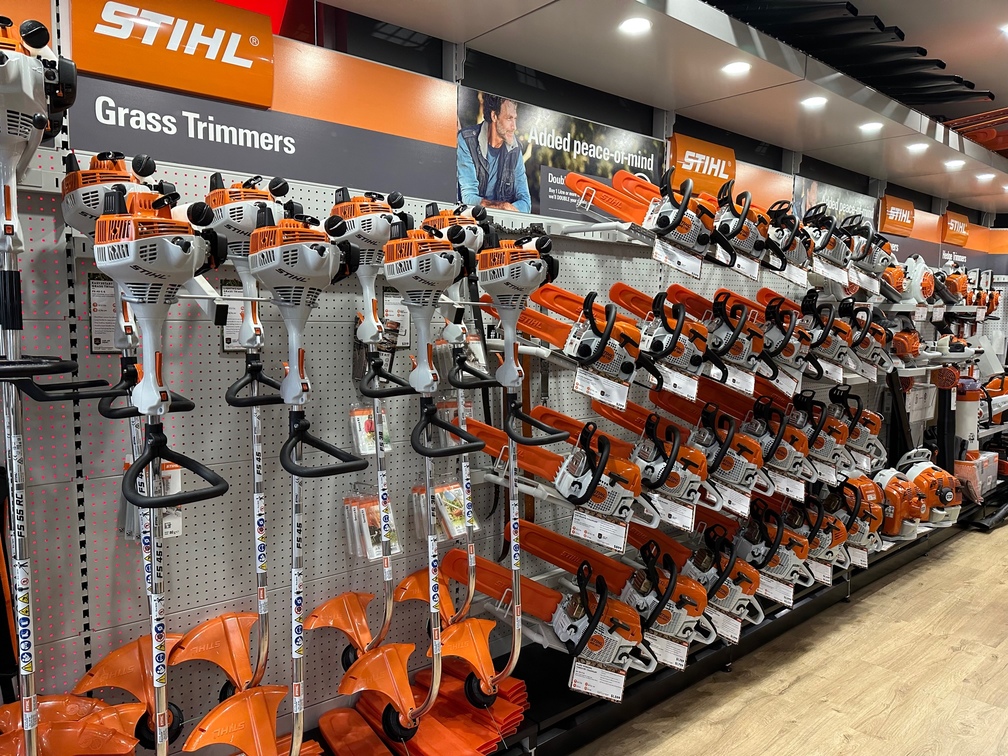
Manufacturers choosing to distribute their products under a franchise agreement (instead of appointing a network of distributors) seek exclusive focus from the distributor on marketing their product or service. The franchise model overcomes the need for the manufacturer to set-up and run company owned retail outlets; this risk and management overhead is shared with the franchisees. The parent company provides the use of its branded trademark, supplies the products, but not typically an entire system for running a business. Product franchises are predominantly large product dealers. Typical examples are car dealerships, agricultural and construction equipment (tractors, harvesters, seed drills, bulldozers, excavators etc.), car part suppliers (tires, batteries, exhaust systems), and portable construction or forestry equipment (chainsaws, pressure cleaners, concrete drilling etc.)
Often the franchisee provides spare parts and servicing which greatly enhances the value proposition but also provide a valuable revenue stream for the franchisee. Car dealerships for example make more profit from servicing than from selling the car.
Business model franchise
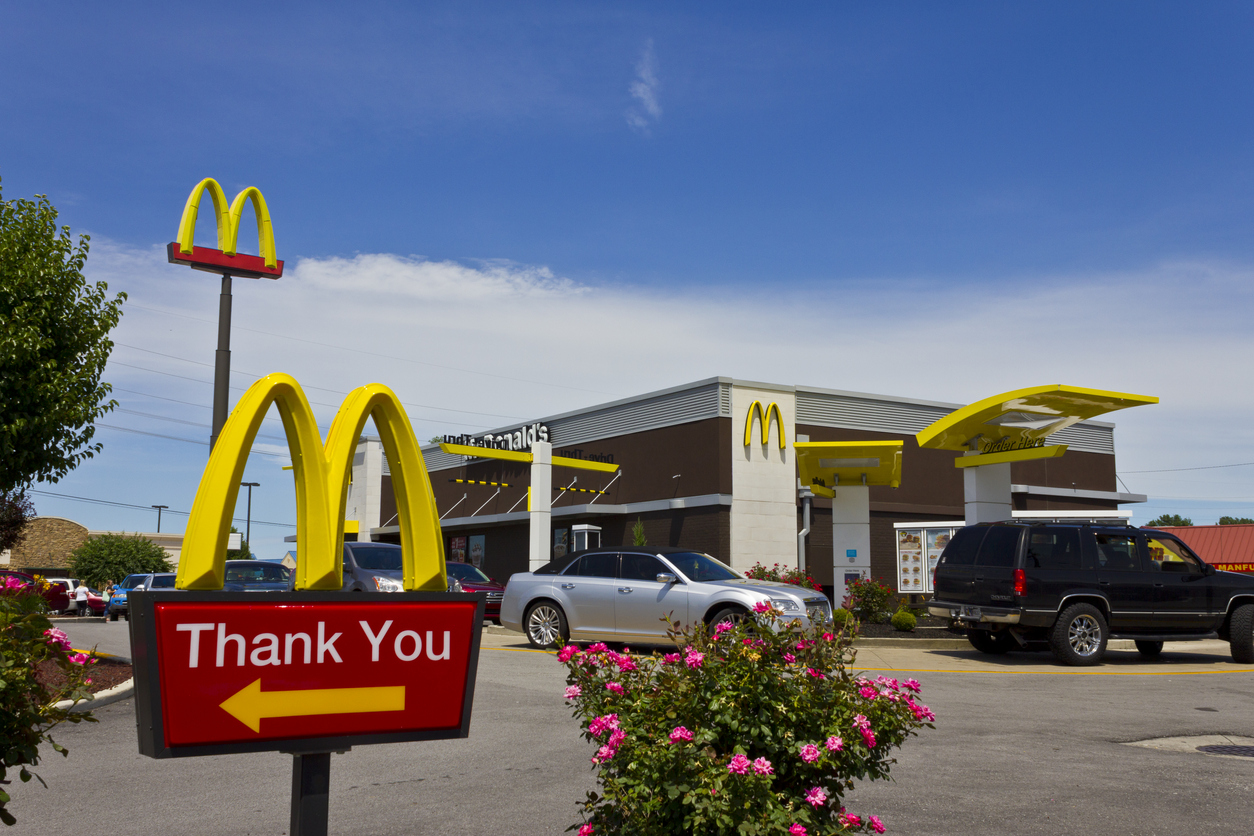
The business model franchise is the closest franchise model to ticking all of the features listed above under "The typical features of a franchise business model." Under this model the franchisee is handed a complete operating model for running the business. Branding, business premises design and shop fitting, equipment, recruitment systems, management policies, operating procedures, marketing methods, software - everything.
McDonald's business model is so detailed it even specifies how its hamburgers should be assembled and using which hands (choreographed). This ensures product consistency but also speeds up production. If you can effortlessly assemble a hamburger faster and still maintain quality, simply by eliminating inefficient equipment and faffing around - that's more hamburgers you can make with the same cost of labor.

Often the franchisor is instrumental in selecting the best location for the franchise based on proven methodologies for site selection.
Under the McDonald's franchise model, McDonald's (the franchisor) owns the property, and building and leases it to the franchisee. The franchisee funds the fit out and equipment (complying with the McDonald's standards) and is responsible for hiring and training staff, running all business operations (using the McDonald's formula) and undertaking a small amount of local marketing. The typical McDonald's franchisee operates more than one site.
Extensive training is usually included in the business model franchise concept. McDonald's for example operates a number of its "Hamburger Universities" globally - Chicago, Tokyo, London, Sydney, Munich, São Paulo, and Shanghai (there was one in Moscow - not sure about that now).

Aspiring franchisees must spend 12 months studying at Hamburger University unpaid and supporting themselves. In addition to ensuring franchise operators are well trained, this arduous requirement is a barrier to unsuitable candidates. Your average McDonald's franchisee is a smart, disciplined, near financially independent cookie. And you can bet McDonald's has developed a well calibrated psychological profile to sift applicants. If they graduate they are then offered a franchise investment opportunity at a location of McDonald's choosing.
There are over 36,000 locations worldwide, of which only 15% are owned and operated by the McDonald’s corporation directly. The rest are franchisee-operated. McDonald's owns 100% of the real estate or leaseholds worth roughly $40 billion and allegedly makes more profit from its real-estate than from restaurant operations.
Aspiring franchisees are buying a thoroughly thought through business model road tested and optimized over 80 years.
The McDonald's model (the "Sonneborn model)" is really a hybrid of a Business Model franchise and an investment Franchise but with a twist - the franchisor (McDonald's) is the property investor and leverages the franchisees and the franchise business model to not just de-risk its investment but to also supercharge return on investment.
McDonald's success and longevity (founded in 1940) has many factors including its ability to continuously innovate while adhering to tightly managed brand standards. Franchisees are often a source of innovation making suggestions for new systems, menu items, and trialing them before deploying to the rest of the network.
Perhaps the overwhelming success factor has been McDonald's focus on the customer and fully understanding the value proposition. There are many moving parts in a franchise business model and it is easy to lose sight of who actually pays for it - the people eating the burgers. Forget about them and the whole enterprise begins to unravel.
Conversion franchise

The conversion franchise model focuses on converting established self-branded independent businesses into franchisees. This approach reduces the risk for both the franchisor and the franchisee. This model is highly prevalent in the real-estate industry but is also seen in florists, plumbing, electricians, automotive repairers, and service station operators.
The conversion franchise efficiently identifies qualified franchisees who have already proven themselves setting-up and running their own businesses. Converting them to a franchisee may be as simple as providing them with new branding (re-skinning their business).
From the franchisees perspective joining a franchise may provide them with a more credible business image, a supply of additional sales leads, access to more performant and well supported business systems (particularly IT), reduced business input costs through volume buying, and potential access to training and conferences with other franchisees where successful business strategies are shared and discussed.
Software as a key enabler of business franchising
One of the most important changes to franchising over the last 30 years has been the use of wide-area networked and, more recently, cloud deployed software as a key enabler for both managing a franchise network and for providing a competitive advantage to franchisees.
Most franchise operators will have built a proprietary core system that enables their franchisees to more efficiently run their businesses while at the same time enabling the franchisor to monitor and track each franchisee's business success.
The most successful business franchises are constantly improving and updating the core business system and typically employ an in-house software development and technical support teams. In the future I would expect AI to be deployed to vastly improve the utility of these systems.
Distribution Strategy and Franchising:
-
Skin in the game: Franchisees have invested their own money in their business and depend on the business for their livelihoods. They are therefore highly motivated to work hard to achieve success, more so than being direct employees. Remembering the alternative method of developing a large distribution network is to set-up company owned distribution points with directly employed staff. Franchising achieves the same thing with less capital and with potentially highly motivated branch managers.
-
Risk Mitigation: Franchising allows companies to distribute risk by shifting financial and operational responsibilities to franchisees. While the franchisor maintains control over the brand and business system, the franchisee assumes the primary risk associated with operating the business. This risk-sharing model encourages entrepreneurship and fosters a mutually beneficial relationship between the franchisor and franchisee.
-
Market Expansion: Franchising enables rapid market expansion without the need for significant capital investment from the franchisor. By partnering with franchisees, companies can quickly establish a presence in new geographic locations, tapping into local markets and consumer preferences.
-
Local Market Knowledge: Franchisees bring in-depth knowledge of their local markets, including consumer behavior, cultural nuances, and regulatory requirements. This localized understanding allows businesses to adapt their offerings, marketing strategies, and pricing to suit the specific needs of different regions, fostering customer loyalty and driving sales.
-
Operational Efficiency: Franchisees operate as independent business owners, assuming responsibility for day-to-day operations, staffing, and inventory management. This decentralized approach not only reduces the burden on the franchisor but also enables efficient distribution by leveraging the franchisees' local resources and networks.
-
Brand Extension and Consistency: Franchising facilitates brand extension by enabling the franchisor to leverage the franchisees' investments, passion, and local connections to expand into new product categories or markets. Moreover, strict adherence to established brand standards and guidelines ensures consistent customer experiences across different franchise locations, enhancing brand reputation and customer loyalty.
Challenges in Franchising:
While franchising offers numerous advantages in distribution strategy, it is not without its challenges:
-
Cost of setting-up a franchise model: The need for a carefully thought through Franchise agreement (using a solicitor who specializes in this area of the law) and the cost of building out the business model and all of the support mechanisms (supply chain, business systems and manuals, training, branding, tracking and reporting etc.) comes at a considerable cost even if you already have a working business to base it on. Then building the Franchisee network (recruiting Franchisees) requires marketing, meetings, and working toward a final signed agreement. Then there is the need to hold the Franchisees hand helping them set-up their business. The cost/benefit needs to be weighed against simply building out a directly owned network, or using some other form of indirect distribution.
-
Profit sharing imbalance: franchisees typically pay fees to the franchisor for the rights to use the brand and business system. In a distribution franchise the franchisor will buy the products from the franchisor. This fee model varies widely for each franchise model but fees fall into two broad categories an up-front or sign-on fee and recurrent fees which may be royalties, contribution to marketing, and management fees. Franchisors that supply raw material or products will often also do so adding a margin, and sometimes lease premises (McDonald's for example) and/or equipment to franchisees. Each of these charge items is an opportunity to transfer profits from the franchisee to the franchisor.
Irrespective of how the fees are structured (and this is important because "there are many ways to skin the cat"), there is a flow of money from each franchisee to the franchisor that must be paid out of the profits generated by each franchise business.
FEES ARE TOO LOW: The Franchisor has insufficient profitability to support the growth and development of the franchise network, and the overall franchise model loses its value. A key challenge is being able to fund the recruitment and retention of a talented management team.
FEES ARE TOO HIGH: Each franchisee does not have sufficient profitability to justify participating in the franchise.
This imbalance may not be apparent in the early years of the franchise model, however as market conditions or business costs increase an imbalance may develop. Franchise models that have a long history generally deliver outstanding returns to their franchisees, have strong brands, and have a sustainable competitive advantage and/or have talented management teams who continuously improve the business model. -
Price control: Under Australian law there are potential legal problems restricting how much influence a supplier (in this case, the Franchisor) has over a distributor (in this case, Franchisees) regarding the price they can sell their products. If price consistency is important for the business concept and brand then Franchising makes this more challenging. This is where directly owned retail outlets have an edge. This is less of a problem for many franchises as it is common for franchisees to make price decisions suited to their local market. As an example McDonald's prices vary between outlets. Franchisors can specify recommended retail prices, however attempts at enforcing prices has legal ramifications (consult a solicitor for advice).
-
Rogue franchisees: the old saying "one bad apple can spoil the bunch" is very true in franchising. A big challenge is when one of the franchisee business owners either strays off the reservation and fails to conform to the brand standards or business model or simply starts falsely believing they deserve more profits and see the franchisor as a leach stealing their money. This situation is a major headache for the franchisor. This demands that firstly the franchise agreement must be very clear about the boundaries, and the franchisor must have already pre-planned how they will manage transgressions. Careful selection of each franchisee (psychological profile) also helps. And lastly, each franchisee must have a clear understanding of and belief in the fundamental symbiosis of the franchise business model. However, sometimes the franchisee is right - they are being screwed...
-
Failure of the business model: Market conditions can change. Demand for the products or services may decline over time and/or competitors develop a superior offering. Sometimes the franchisor fails to invest in the future of the business (lack of promotion, failure to update the product concept, failure to anticipate and react to changing market conditions, or developing the wrong strategies).
-
Flawed business model: to work well a franchise should have the ability to scale. In addition to having sufficient demand for the products or services the franchise offers, the means by which value is created by the franchisees' businesses must be replicated without reliance on a scare resource. The scarce resource may be talent. For example, some business models rely excessively on being an effective high-pressure sales person. Not all franchisees are comfortable with, or capable of, high pressure selling.
-
Unethical business model: many franchises only work because of the profits generated from the sign-on fees paid to the franchisor for the initial rights to join the franchise. Franchise models designed to milk sign-on fees are usually not well conceived, well executed, or well supported. Unethical franchise operators target naive potential franchisees with little intention to develop a sustainable enterprise. Such models often feature high sign-on fees with very attractive recurrent fee structures - "You get to keep most of your profits!" It should be noted that in Australia, franchise law aims to reduce the obvious dirty tricks dreamed-up in the past, but no legislation (or code) can think of everything. There is wriggle room.
-
Franchisee saturation: Signing-up too many Franchisees may saturate the market to the point where market demand cannot sustain that many operators in the market.
-
Quality Control: Maintaining consistent quality across franchise locations can be a challenge. Franchisors must establish robust standards and policies, training programs, monitoring mechanisms, and quality assurance protocols to ensure that franchisees uphold the brand standards. This is particularly important in franchising of services and retail.
-
Communication and Coordination: Effective communication and coordination between the franchisor and franchisees are critical to align strategies, address concerns, and share best practices. Establishing clear channels of communication and facilitating knowledge exchange are vital for successful franchising.
-
Legal and Regulatory Compliance: Franchisors must navigate complex legal and regulatory frameworks, both at the national and international levels. Compliance with laws pertaining to franchising, intellectual property, labor, and consumer protection is crucial to avoid legal disputes and maintain brand reputation.
